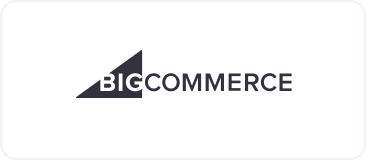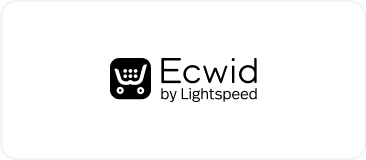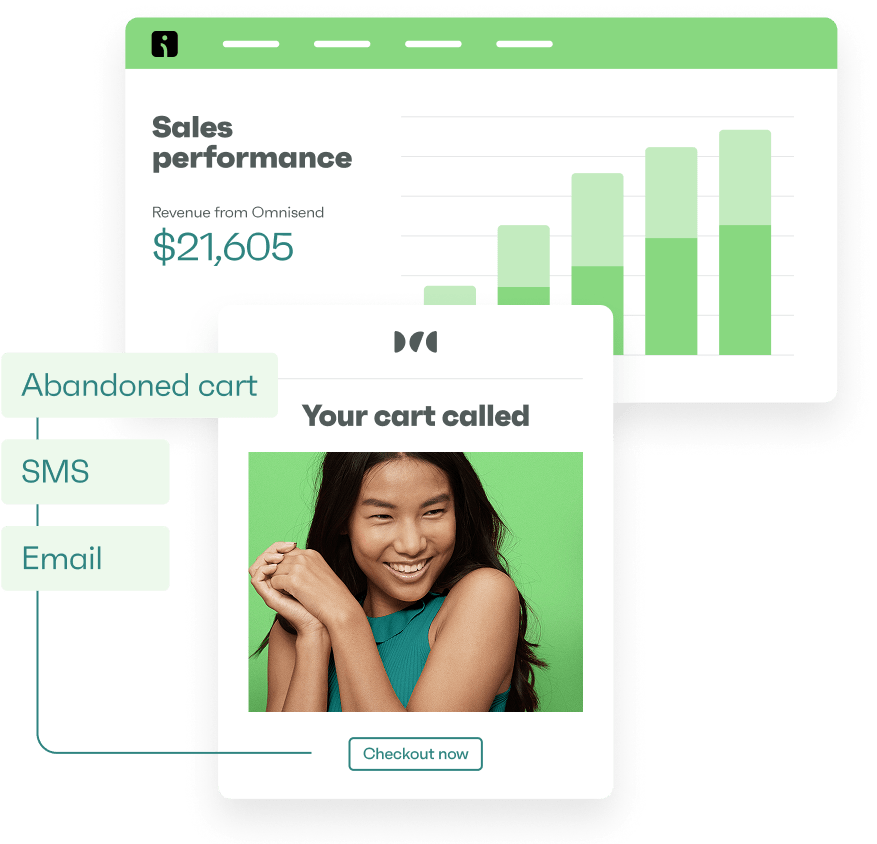Drive sales on autopilot with ecommerce-focused features
See FeaturesDigital products skip the warehouse and shipping headaches entirely. Create them once, sell forever, and keep most of the revenue as profit. But what is a digital product?
A digital product is downloadable or viewable content that you sell for use on a desktop or handheld device, such as a PDF download or a video course locked behind a membership site.
You’ve probably downloaded manuals and instructions for things you’ve built before — that’s digital content. It becomes a product when you create, market, and sell it.
Both one-time downloads and subscriptions generate immediate sales and recurring revenue, and your biggest investment is digital product creation.
This article provides a complete definition of digital products and outlines the steps to create, sell, and market them successfully in 2025.
Quick sign up | No credit card required
What is a digital product?
Digital products are items you sell online that customers download or access through the internet. Ebooks, course videos, Lightroom presets, Notion templates, printable planners — anything delivered electronically rather than shipped in a box.
You create it once, sell it forever. Write an ebook this month and still collect payments five years later. No reordering inventory when stock runs low. No calculating shipping costs to different countries. Your product exists as files on a server, ready for instant delivery.
The profit margins beat any physical product business. After covering your initial time and maybe some software subscriptions, nearly every sale is pure profit. Selling a $30 template costs you the same whether one person buys it or 1,000.
Your market spans the globe instantly. Someone in Singapore can purchase your design templates at 3 AM their time while you’re asleep in Seattle. Download links arrive automatically, and you wake up to sales, not a pile of orders to pack and ship.
Demand keeps growing because people want immediate solutions. They’ll pay $97 for an online course that starts today rather than wait for a physical book to arrive next week. In other words, it pays to learn how to sell digital products.
Remote work made everyone comfortable buying digital products. Your knowledge, packaged digitally, becomes as valuable as any physical good.
Don’t fancy creating digital products from scratch? Then discover digital dropshipping:
Digital dropshipping 101: Everything you need to know
Top digital products you can sell online in 2025
There are multiple types of digital products you can sell online. Categories that consistently perform well include templates, written guides, videos, and digital memberships.
Some require minimal development, such as ebooks (cover image, typography), but others, like printables and apps, take longer to build and could require professional services.
Here are the best-selling digital products for 2025:
Printable digital products
These are PDFs that your customers download and print at home, including planners, worksheets, wall art, party invitations, charts, and print-on-demand designs. There are no inventory costs, shipping delays, or physical product management.
Etsy handles most consumer printables, and Teachers Pay Teachers serves the education market. You can also provide download links in an email after payment is made.
Here’s an example page from a PDF for sale on Etsy with build plans for an outdoor bench — it sells for $5 and has a 4.9/5 star rating with 60 reviews:

Additional reading
Print-on-demand vs. dropshipping: Which fits your goals?
Ebooks
Written guides, fiction stories, and recipe collections are among the best-selling digital products on Amazon. Production involves writing and formatting without printing or distribution expenses.
Amazon KDP dominates the third-party publishing market, although Gumroad and direct sales (via email and your own website) offer better margins.
Author Hal Elrod publishes on Amazon and sells ebooks up to $99.97. Here’s the foreword from his work, The Miracle Morning:

Online courses
Video lessons, worksheets, quizzes, and certificates organized into modules command premium prices. Students value structured learning and direct access to expertise.
Teachable and similar platforms handle hosting and student management, letting one course generate income for years.
Entrepreneur Jenny Rushmore created a six-figure sewing business with her ecommerce store Cashmerette, which sells PDF and printed sewing patterns, such as this one:

Business templates and printables
Templates for annual business reports, letterheads, media kits, and social media layouts save buyers hours of setup time they’re willing to pay for.
Check out Creative Market to attract professionals, and Etsy for DIY entrepreneurs. Consider bundling multiple templates to increase average order values.
GoldenPixelStudio provides one of the best examples of digital products with its Business Pitch Deck for sale on Creative Market:

Software, apps, and plugins
WordPress plugins, apps, and browser extensions require programming knowledge or developer partnerships, but they command a premium and can generate significant revenue.
Higher technical barriers create less competition and premium pricing opportunities. App stores and CodeCanyon handle most distribution.
A quick search on CodeCanyon reveals thousands of premium plugins. Bookly PRO is a standout, with 53,300+ sales and a $199 price tag:

Digital art and illustrations
Stock photos, vector graphics, digital paintings, and patterns meet constant demand from designers and marketers.
Licensing tiers affect pricing, with commercial rights commanding more than personal use. Stock photo sites and Creative Market connect artists with buyers globally.
Digital memberships
Workout programs, dropshipping product success courses, business masterminds, and design asset libraries generate predictable monthly revenue.
Members pay for continuous updates and community access. Patreon and MemberPress (for WordPress) are popular hosted and self-hosted options.
Patreon member Draw Brighton sells memberships from $4.50/month with access to drawing reference sets and an image library:

Music, beats, and audio files
Content creators need instrumental tracks, sound effects, meditation audio, and podcast intros without copyright issues.
If you’re a musician, you can expand your income beyond streaming pennies. BeatStars serves hip-hop producers, and AudioJungle covers broader audio needs.
For instance, a search for “melodic” on BeatStars returns hundreds of results, and purchasing any track is as easy as adding it to the cart and selecting a license:

Video content and workshops
Skill tutorials, fitness programs, and cooking demonstrations offer focused learning sessions that you can sell on a subscription basis.
Buyers want tangible results without committing to complete courses. Vimeo and Gumroad simplify video delivery and payment processing.
STRONGLAND Publishing sells business guides on Gumroad, with the digital product example below, The Art of X: Build a Business That Makes You $100/Day, priced at $297:

Digital planners and trackers
These PDF files function like traditional paper planners but with clickable navigation between sections. Buyers want a familiar planner experience in digital format for managing daily schedules, tracking habits, and budgeting.
Designs range from minimalist layouts to decorative themes with digital stickers. Etsy dominates this niche, where customers pay for well-designed organizational tools they can reuse year after year.
If you’re wondering how to start selling digital products like planners and trackers, check out the image below of a digital planner whole shop bundle on Etsy. It costs $49.42 (when not on sale) and has a 4.9/5 rating with more than 5,000 reviews:

Fonts, icons, and other design assets
Website and brand designers regularly purchase custom typefaces, icon collections, mockup templates, and UI kits to resell in their work.
Commercial licenses will generate more revenue than personal use rights. MyFonts is a top choice for typography sales, and Creative Market covers comprehensive design resources.
Check out these sans-serif fonts for sale on MyFonts:

How to create and sell digital products
Follow these five steps to create and sell the most profitable digital products:
1. Research and validate an idea
Your digital product needs an audience to be successful. It doesn’t even need to be a big one. A niche audience, such as canal boat owners, can generate significant revenue if you have a manual or other file that brings value to their lives.
Here’s how to research and validate your ideas:
- Plug your idea into Facebook and Reddit. See if there are any questions and frustrations related to your idea.
- Ask trusted fellow professionals. People on LinkedIn and community forums can offer their opinions.
- Email a questionnaire to subscribers. If you don’t have an email list, you could build a basic landing page, share it on social media, and see who signs up. Offering pre-orders at half price helps to encourage signups.
- It can be overwhelming to decide which product to go with. Take a look at Amazon’s bestseller categories, Etsy’s trending searches, and Udemy’s popular courses to see what’s doing well.
No interest and poor feedback mean you have the wrong idea or the wrong audience. Move on to the next one so you can make the most of your email marketing ROI.
2. Choose the best format
Your skills determine your format. Writers create ebooks. Designers make templates. Teachers build courses. Pick what you can produce well.
Popular digital product ideas include:
- PDF guides and ebooks
- Video courses or tutorials
- Templates
- Stock photos or graphics
- Presets for photo/video editing
- Audio files or music
- Digital planners
- Code snippets or plugins
There’s also no harm in producing unique formats for your customers. For instance, you could provide a video alongside your PDF guide.
3. Create the product
Tools for building content are mostly free or affordable. Here’s how to create digital products:
- PDFs and ebooks: Write in Google Docs or Word. Design covers and format pages in Canva or Snappa. Export as PDF.
- Screen recordings: Loom gives you 25 free videos (five minutes each). OBS Studio offers no recording time limits, but it takes longer to learn.
- Templates: Build calculators, budget trackers, or planning systems in spreadsheets. Notion workspaces combine project tracking with calendars and databases.
- Design assets: Canva handles Instagram templates and printables on the free plan. For professional designs, Adobe Creative Cloud Pro ($69.99/month) is worth it.
- Audio files: Audacity works on any computer. Mac users get GarageBand free. Both handle podcasts, meditations, and music.
Free tools are fantastic for initial concepts, but it’s easy to outgrow them when you’re building unique digital content. Sign up for a monthly plan first (if possible) to get a feel for any premium tool before committing to an annual plan.
If you’re wondering how to make digital products, you’ll also enjoy these guides:
Sell digital products on Shopify in 2025: Step-by-step guide
How to sell digital products on Woocommerce in 2025
4. Set up delivery
So, where to sell digital products? You need automated systems to send files after payment, and they should be reliable and efficient. Here are your options:
- Marketplaces: Upload once, and they handle everything for you — for example, Etsy and Gumroad send secure download links automatically after purchase
- Ecommerce stores: Install delivery apps like SendOwl ($39/month) for full automation or manually email links for low-volume sales — as you grow, automation becomes essential
- Direct sales: Add download links to PayPal receipts, set up email automation with Omnisend, embed Gumroad checkout buttons on your site, or use membership plugins to gate content
Tip — The next article section elaborates further on these sales channels.
5. Pricing and packaging
Value determines price, not creation time. A worksheet saving someone 10 hours of work might sell for $47. A complete course teaching income-generating skills could be $297.
Check competitor prices for context, then position yourself to undercut them, provide additional value, or both, and clearly communicate your benefits to customers.
Consider bundling digital products to increase average order values — sell one template for $19 or three for $47. Start your prices higher rather than lower because it’s easier to create discounts in the future for promotional campaigns.
6. Start selling
Create listings that sell with these elements:
- Headlines focusing on outcomes
- Clear list of contents
- Preview images showing quality
- Videos and GIFs
- Social proof, such as reviews (once you have it)
Watch early feedback closely. Update descriptions based on questions. Improve the product based on complaints. After establishing sales on one platform, add others and keep the pricing consistent to collect reliable sales data.
Where to sell digital products online
The best place to sell your digital products is wherever your customers are. It’s a guarantee they’ll be on marketplaces like Gumroad or Etsy and the like, but building an ecommerce store and selling direct has much greater profit potential:
Marketplaces, such as Etsy, Gumroad, and Creative Market
Selling on established marketplaces means customers are already there. However, you’ll pay a premium to access that pre-established audience.
Here’s what you’ll pay on three leading platforms:
Etsy
- $0.20 listing fee (active for four months)
- 6.5% transaction fee
- 3–4% payment processing
- Total: ~10% of each sale
Gumroad
- 10% + $0.50 per sale (direct link customers)
- 30% per sale (marketplace discovery)
- No listing or monthly fees
Creative Market
- 50–70% revenue share
- Depends on exclusivity agreements
- No signup fees
With each of these, file delivery and customer service come built in, so you can upload your files, write descriptions, and start selling.
Pick based on what you’re selling:
- Etsy works for printables because crafty shoppers browse there
- Gumroad suits informational products and courses
- Creative Market attracts designers who buy fonts and templates
Sell digital products online with a few platforms and see which generates the most revenue.
Via an ecommerce store that you build
Owning your customer experience is the best reason to build a store. Imagine being able to:
- Set your own prices
- Create custom bundles
- Run promotions whenever you want
Customer emails belong to you, too. You can build segments, send targeted campaigns, and analyze purchase patterns without platform restrictions.
You have two options when building an ecommerce store:
- Use a hosted platform like Shopify that handles technical details for you (fantastic for beginners, those without development experience)
- Self-host with WooCommerce on WordPress, where you manage hosting, security, and updates yourself (best for having complete control)
With a hosted platform, you pay transaction fees plus a monthly subscription fee to continue using it, while self-hosted ones charge transaction fees only but have higher development costs.
Here’s a rundown of the fees for three platforms:
Shopify
- Monthly fee: $39
- Transaction fee: 2.9% + 30¢
- Digital delivery apps are $5–20/month extra
BigCommerce
- Monthly fee: $39
- No platform transaction fees, only payment processor fees (expect 1.5% to 3.5% plus a fixed amount per transaction)
WooCommerce
- Monthly fee: Free
- Hosting: $10–30/month
- Development costs and premium plugins could cost you $1,000 to $5,000
Directly through social media, email, and blogs
Granted, it only works if you have an audience, but once you do, you can add PayPal or Stripe checkout buttons to your Instagram bio, blog sidebar, or email newsletters.
You pocket 97% after processing fees because no marketplace cuts or monthly platform charges are eating into your margins.
Consider these direct selling methods:
- Link-in-bio tools (Linktree, Beacons) with product listings
- Email newsletters with PayPal/Stripe checkout buttons
- Blog posts with download links
- Landing pages built with Kit
- Facebook/Discord group exclusive offers
- YouTube video descriptions with direct purchase links
Direct selling works with an existing audience, and building that audience could take months of promotional activity before any paid offers succeed.
Without followers who already value your work, your direct sales will be slow, but once established, this approach keeps the most profit in your pocket.
How to market digital products
Building an audience before launching prevents zero sales on launch day. Start promoting while you create, not after, with these marketing channels:
Email marketing
An email marketing app and contact list let you reach people directly without algorithm interference. You can create campaigns and automations that cover your customer journey, and group subscribers for appropriate targeting.
Omnisend automates your email and SMS marketing with these capabilities:
- List-building popups and forms
- Welcome series for new subscribers
- Post-purchase follow-ups
- Cart abandonment recovery
- Segment buyers from browsers
- Combine email + SMS in one workflow
- Visual drag-and-drop campaign builder
- Schedule campaigns in advance
Ecommerce email marketing opportunities include newsletters, cross-sells, questionnaires, feedback requests, and post-purchase discounts.
Content marketing and SEO
Blog posts attract buyers searching for solutions. Keyword research tools reveal phrases like “meal planning template for busy moms” or “Instagram content calendar for coaches.”
Tools worth your time include:
Write articles solving these problems, then mention your product as the done-for-you option. Quality content can rank for years, bringing traffic long after publication.
Learn how to use email and SEO together:
How email marketing and SEO work together 2025
Social media
A few content ideas include behind-the-scenes production videos, customer wins, and product tutorials. Add links to your post and bio when appropriate.
Posting frequency depends on your platform:
- TikTok rewards daily uploads
- Instagram Stories need regular updates
- YouTube channels succeed with weekly or even monthly videos if quality stays high
- LinkedIn posts should follow trending topics, discussions, and cover what digital products are in demand
How do social media and email marketing stack up?
Social media vs. email marketing — which is better for 2025?
Influencer partnerships
Creators who already engage with your target market can expand your reach with minimal effort, although the payment structures vary from flat fees per post to commission on sales (and sometimes both).
Free products for review often start relationships. Clear communication about expectations prevents disappointment. Focus on partners who generate sales, not just engagement metrics.
Affiliate marketing
You’ll pay affiliates 20–50% of sales, and the higher the rate, the more prominent your links will be on their websites.
Unlike influencers, you don’t pay affiliates a fee to promote you. Instead, you pay a commission on sales. Additionally, you don’t promote them in your marketing. It’s worthwhile creating a promotional kit with digital product images and benefit lists to maintain branding.
How many affiliates should you work with? It’s low-risk because you aren’t paying up front, so any number is okay. Five active affiliates could outperform fifty inactive ones. Track sales with UTM links and work with those that bring in consistent revenue.
Discover the best affiliate platforms:
Affiliate email marketing: Top strategies & programs
Final thoughts: Can you really make money from selling digital products?
Yes. The highest earners create products for niche audiences — Notion templates for freelance therapists, budget spreadsheets for van life travelers. These smaller markets have buyers ready to pay but fewer creators competing for attention.
Your time investment stays fixed whether you sell five copies or 500. Each sale beyond breakeven is nearly pure profit, making digital products one of the few businesses where effort doesn’t scale with revenue.
Start with one product and one platform. Perfect your listing, gather reviews, then expand rather than spreading yourself thin across multiple mediocre products.
Build your audience as you create, not after — a brilliant course nobody knows about earns nothing, but a decent template with email marketing can earn thousands.
Pick something from this list that matches your skills, create your first version, and get it in front of customers on the channels where they spend time.
Quick sign up | No credit card required
TABLE OF CONTENTS
TABLE OF CONTENTS


No fluff, no spam, no corporate filler. Just a friendly letter, twice a month.

 OFFER
OFFER







